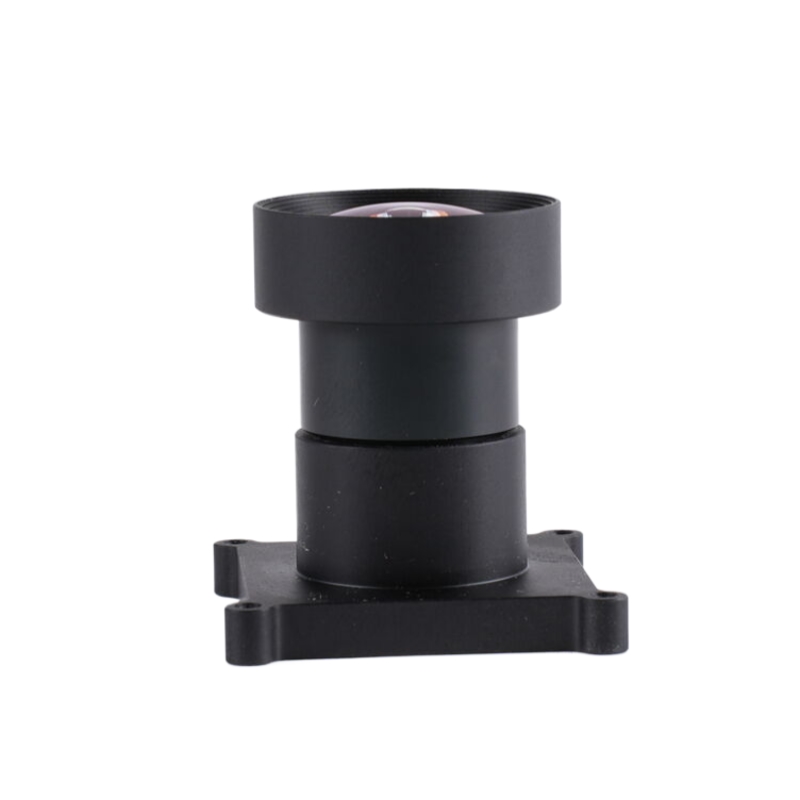Industrial News
Introduction to Large Image Lenses
Large image lenses have become indispensable in diverse fields such as medical imaging, aerial photography, surveillance, and industrial inspection. These lenses are designed for capturing expansive, high-resolution images with exceptional clarity and detail, making them ideal for tasks that require capturing large areas or intricate details in a single shot. Their unique ability to cover a wider field of view without compromising on image quality enables professionals across industries to gather critical data quickly and accurately.

Product Highlights: High Resolution and Broad Coverage
The standout feature of large image lenses is their ability to capture high-resolution images across a wide field of view. Equipped with superior optical technology, these lenses maintain consistent clarity and sharpness across the entire image. Large image lenses are ideal for applications where precision, reliability, and image quality are paramount, as they offer reduced distortion, high light transmission, and compatibility with high-resolution sensors.
Solving Key User Pain Points
Large image lenses address several common challenges faced by users in fields that rely on capturing vast or highly detailed scenes:
Reduced Need for Multiple Shots: By covering a large area in a single image, these lenses eliminate the need for multiple shots, saving time and resources.
Enhanced Image Clarity: In fields like medical imaging and surveillance, where every detail matters, large image lenses provide exceptional clarity to ensure no detail is missed.
Adaptability to Low-Light Conditions: These lenses often include high light transmission features, enabling clear, detailed images even in challenging lighting conditions, which is crucial in applications such as nighttime surveillance or aerial photography.
Application Areas: Versatile Use Cases Across Industries
Large image lenses are designed for versatility, excelling in a variety of fields, including:
Medical Imaging: In diagnostic imaging, large image lenses provide detailed views of organs or tissue sections, aiding in accurate diagnosis and treatment planning.
Aerial Photography and Mapping: For capturing landscapes, agricultural zones, or construction sites, these lenses allow for broad, high-resolution images that are essential for detailed mapping and land assessments.
Surveillance and Security: Large image lenses help cover vast areas in public or restricted zones, providing high-resolution images for better threat detection and identification.
Industrial Inspection: These lenses are used to inspect large machinery or assembly lines, identifying potential faults or areas for maintenance without interrupting the production process.
Product Advantages: Precision, Versatility, and Efficiency
Superior Resolution: Large image lenses offer high-quality resolution across the entire field of view, essential for applications that require detailed imaging, such as medical diagnostics or geological mapping.
Wider Field of View: The lenses capture larger areas in a single shot, enabling efficient data collection in fields like aerial photography, where wide coverage is vital.
Adaptability in Various Lighting: With high light transmission and low distortion, these lenses perform well in diverse lighting environments, from dim indoor settings in hospitals to outdoor landscapes in variable light conditions.
Reduced Distortion: Engineered to minimize distortion at the edges, these lenses produce clear, accurate images, which is crucial for fields that rely on precise image interpretation.
Design Highlights: Built for Quality and Consistency
Large image lenses incorporate design features that enhance performance and reliability:
Advanced Multi-Coating: Multi-coating on lens elements reduces glare and enhances contrast, resulting in sharp images without reflections or artifacts, particularly in bright or outdoor environments.
High-Quality Optics: Made from premium glass materials, these lenses are designed to maintain clarity and durability, essential for applications like aerial photography, where environmental conditions can be challenging.
Compatibility with High-Resolution Sensors: Designed to pair with high-resolution cameras, these lenses ensure every detail is captured clearly, making them ideal for applications requiring both precision and depth.
Sturdy and Lightweight Construction: Many large image lenses are constructed to be durable yet lightweight, making them practical for use in drones or handheld devices in the field.
Product Value: Enhancing Efficiency, Quality, and Versatility
Large image lenses bring considerable value to various industries by:
Improving Workflow Efficiency: By capturing more in a single shot, these lenses reduce the time and resources needed for data collection, particularly valuable in mapping, inspection, and medical imaging.
Elevating Image Quality: With high clarity and reduced distortion, large image lenses ensure that images are sharp and reliable, enhancing the accuracy of diagnostics, mapping, and surveillance tasks.
Increasing Adaptability Across Fields: These lenses are suitable for multiple applications, making them a versatile investment for professionals in need of reliable imaging tools across different environments and conditions.
Conclusion
Large image lenses are instrumental in expanding the capabilities of industries that rely on high-quality, expansive imaging. Whether it’s aiding in medical diagnostics, providing clear surveillance footage, or capturing landscapes in aerial photography, these lenses deliver consistent, high-resolution images with a wide field of view. Their advanced design and adaptability make them a valuable tool for professionals looking to optimize their workflow, capture more data in less time, and achieve exceptional image quality. For industries focused on precision and efficiency, investing in large image lenses can provide a significant competitive advantage.
 English
English  German
German Japanese
Japanese Korean
Korean Vietnamese
Vietnamese French
French Spanish
Spanish भारत
भारत



